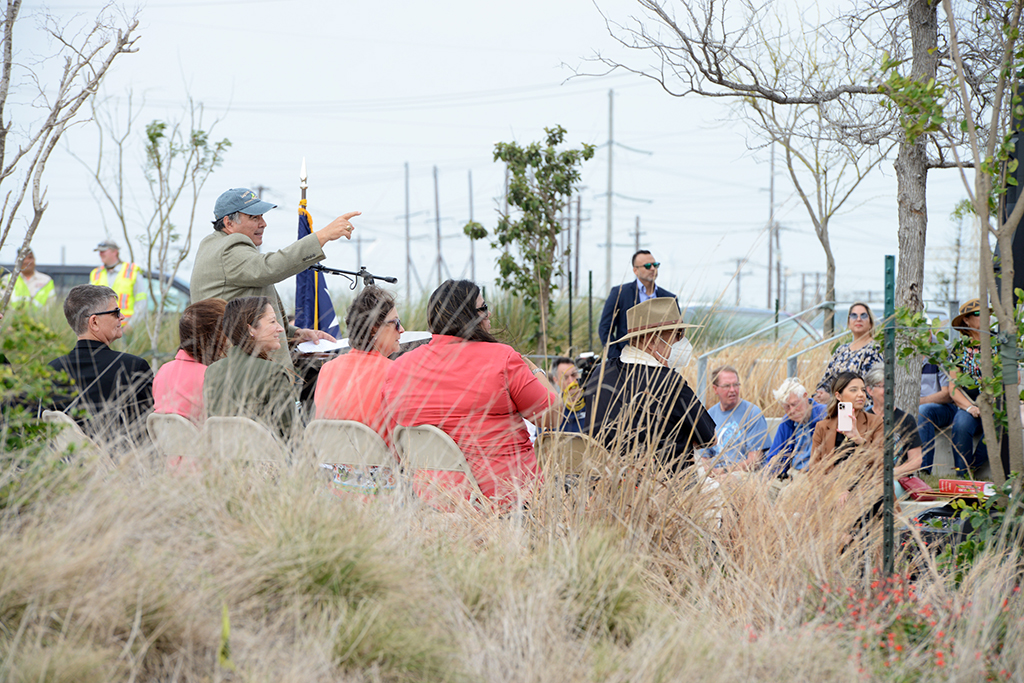LAGUNA VISTA — Despite pandemic-related delays, the $11.1 million South Texas Ecotourism Center is ready for visitors.
The center, located on State Highway 100 here, offers free entry to anyone wishing to partake of the center’s interpretive programs of the ecosystems found in the Rio Grande Valley.
At the grand opening of the ecotourism center Tuesday morning, all of the speakers stressed just how much of a team effort was necessary to bring the project along from the initial vision of Cameron County Commissioner David Garza.
“Like many other projects that I’ve been involved in, and many of you have been involved in, none of these projects is done in isolation,” said U.S. Rep. Filemon Vela (D-Brownsville). “They’re done with a great deal of collaboration, and I can tell you, there’s no question that this project involved the collaboration of a lot of people over the last five years.”
The new ecotourism center covers 10 acres on the south side of State Highway 100, and abuts the vast Bahia Grande Unit of Laguna Atascosa National Wildlife Refuge.
Most of the site consists of walkways which wind in and around a series of raised “islands” of native grasses and plants. Project staff say 48,000 native species have been planted.
Alongside the islands are interactive points where a visitor can use his or her mobile phone to scan a QR code and receive more educational information on the ecosystem being portrayed.
Atop the native plant islands are life-like replicas of common species found in the Rio Grande Valley, including a coyote, jackrabbit, rattlesnake, raccoon, armadillo, bobcat and javelinas.
“This facility exists to build the understanding and appreciation for the ecosystems throughout the Rio Grande Valley,” said Cameron County Judge Eddie Treviño Jr. “This unique center is open to locals and tourists alike, to learn about Cameron, Hidalgo, Starr and Willacy county ecosystems, and discover places they can visit to experience these ecosystems here in the Valley.”
Funding for the ecotourism center mostly came from county monies, with the county hotel-motel venues tax and motor vehicle rental tax accounting for about $9 million.
Two grants from the Texas Parks and Wildlife Department’s local park grants program totaled $1.25 million, and the federal Economic Development Administration awarded a grant of around $1 million.
“The fact is that we can now bring more partners, more visitors and more economic opportunities,” said Alejandra Castillo, assistant secretary of commerce with the economic development agency.
“And hopefully when we look back 15 years from now, we’re going to say, ‘wow, I remember when we just opened this,’ and look at potentially hotels and restaurants and ways to encourage not only our understanding and our love for ‘la tierra,’ but be able to understand just how unique this ecosystem is,” she said.
The center catalogs the native plant and animal species in four ecosystems found in the Rio Grande Valley — coastal prairie, lomas, savanna and thornscrub forest.
The center consists of interactive exhibits, a bird-watching area, nature trails, benches, an environmental education amphitheater, overlooks, photo blinds, butterfly gardens and an indoor visitor center, classroom and multi-purpose room for exhibits and meetings.
“Kids can come in and learn about the flora and fauna of the ecosystem,” Commissioner David Garza said. “So can curious adults for that matter.”




